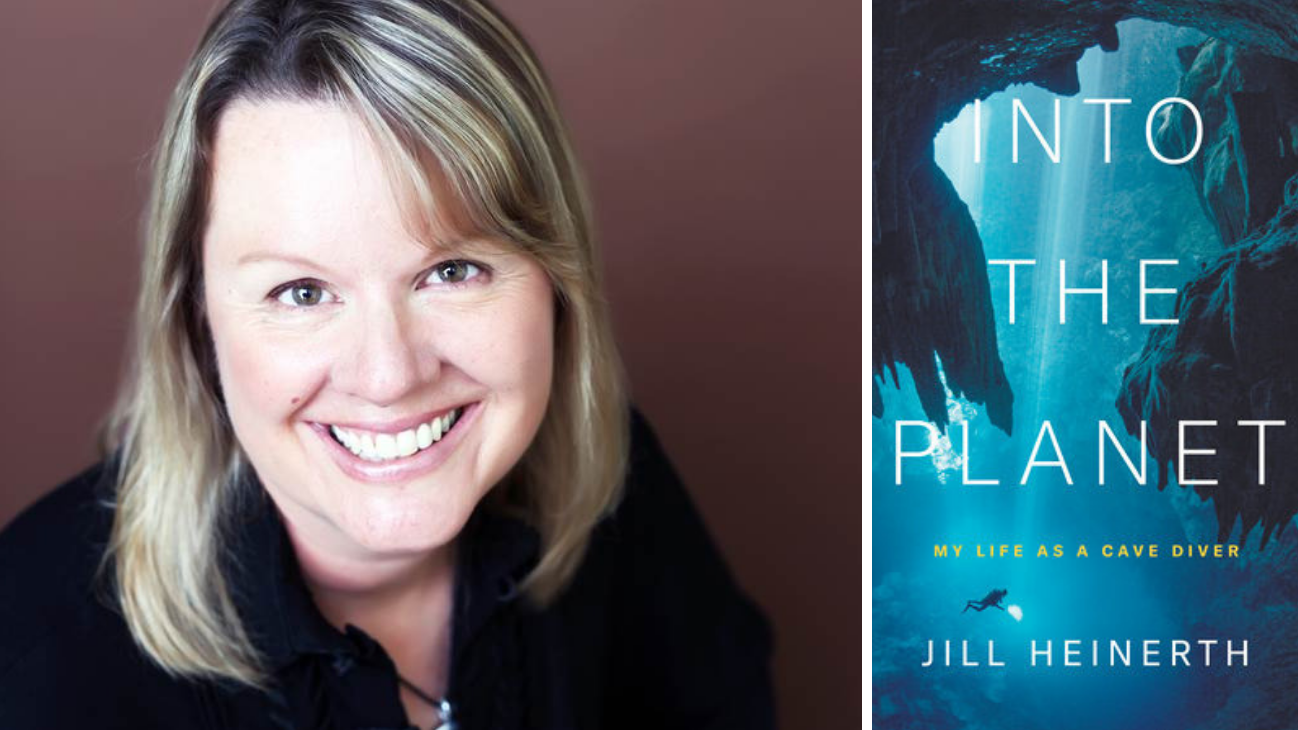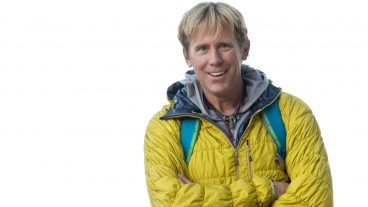Most people would be terrified to walk into Jill Heinerth’s workplaces. A celebrated cave diver, Jill has undergone the most dangerous technical dives through claustrophobic blackness deep inside underwater caves, and searched for never-before-seen ecosystems hidden inside giant Antarctic icebergs. More people have stepped on the moon then visited the places Jill has seen on Earth, and she captures it all in her new book — part memoir, adventure, and science — Into the Planet: My Life as a Cave Diver.
“Since I was the smallest child, I always wanted to be an explorer — to have an opportunity to go someplace where nobody has ever been before,” Jill said in an interview with NPR. “As an artist with my camera, it’s an incredible opportunity to document these places and bring back images to share with others.”
Into the Planet is a riveting account of one of the most exhilarating pursuits in the world. Jill transports readers deep into the most exquisite, untouched corners of the earth, where fear must be reconciled and the innermost parts of the human condition are revealed.
In celebration of her new book, Jill wrote a piece for O, The Oprah Magazine, sharing five valuable lessons about life that cave diving has taught her on surviving and thriving in life and overcoming the fear that stops us from truly living. We rounded up her five tips below:
1. Step Into the Darkness
Fear is a healthy emotion that lets us know that we care about future outcomes — but it is also capable of causing emotional paralysis. I’m scared when I go diving. I look at that as a good thing. To succeed, I have learned to visualize everything that can go wrong and mentally rehearse the solutions before I hit the water. Then, if — for example — I get entangled in a safety line, I will know how to cut and repair it in the dark. Self-awareness and personal growth have followed my frightening experiences, so I seek them out.
2. Recognize Your Mortality
Facing fear or even death while thoughtfully engaging in risk can be very life-affirming. After getting trapped inside an iceberg cave and making a meticulous but harrowing escape, I felt intoxicated with accomplishment. I have lost experienced colleagues that were not as fortunate, so I don’t take my training for granted. I practice hard, accept the risks, and experience gratitude every day.
3. Breathe Deep
When I am trapped in a blinding blackout of silt and have lost the safety line, it is easy to panic. My primal brain tries to take over, seizing control of my heart and lungs. But in the face of great danger, I have learned that it is far better to turn off that primal instinct of fight or flight by taking slow, deep breaths. In controlling my breathing and heart rate, I can postpone otherwise crippling emotions and focus on the next correct decision. With practice, I can remain calm, inhaling thoughtfulness, and pragmatism that helps me take careful steps to find the lost guideline and ultimate safety. Don’t get me wrong. I am not without emotion. After I solve the problem at hand, I leave plenty of room to acknowledge the experience and even have a well-earned cry.
4. Understand the Scope
Big problems are not solved quickly. In a cave restriction no taller than the space beneath your couch, a panicking diver became the cork in the bottle containing my life. I had to calm her down, repair our broken safety line, and manage a failing breathing system. At that moment, trapped in the confinement of a silty cave with broken life support gear, the chattering gremlins in my head were very loud. It was tough to conjure up a vision of survival. Recognizing that I needed to take the next small yet decisive step toward a positive outcome saved my life. For 73 minutes beyond my dive plan, small victories added up, even as rescuers were rushing to the scene, expecting to recover my dead body. Now I know that small decisive actions add up to big successes.
5. Embrace Failure
It would be easy to give up cave diving after getting trapped in a cave. But each incident or aborted dive has informed me through discovery. The sum of the good, bad, and terrifying experiences in my life is not an epic failure. As a young woman, abandoning a business, filing for divorce, and fighting off an attacker were scary milestones. Facing the deaths of close colleagues have been devastating. But the entirety of those life experiences has made me wiser and stronger. By embracing every aspect of my life, I have made significant discoveries that have built who I am today.
Hear more from Jill about her death-defying experiences, incredible life-changing moments and how she captures them in her new book Into the Planet in this fascinating interview with NPR.
We were diving beneath this iceberg and we were well into these passages when I was hearing cracks and pops and groans and all sorts of sound from the ice, and in the moment I didn’t realize what it was. But when we turned around to retrace our footsteps and come back out, we got to a point where we could swim toward the surface, toward daylight, and I realized that the doorway — the very opening that we had gone into to get into the iceberg — had closed. There’d been a calving, and a massive piece of ice had blocked the doorway out.
We worked our way around, in between blocks of ice, and found a new route back to the surface. And I remember sitting there, about 20 feet below the surface, just doing a hang for what we called decompression time at the end of the dive, just to allow my body to re-acclimate to the pressure. And I looked up and I could see my colleagues on a zodiac boat waiting for us, and they were like high-fiving and dancing, and apparently it was much more dramatic from their viewpoint than from mine. When that piece of ice calved and blocked the doorway, it nearly threw them out of the boat and they were sitting up there assuming that we were dead. …
And as we sat there eating our meal [later on the boat], suddenly I heard a scream on deck and we went running up … onto the deck to see the very iceberg we had just been inside of cracking and dissolving and breaking up into just slush ice on the surface of the ocean as far as the eye could see. So the cave we had just been inside was now gone. … If we’d been in there, we would have been killed. There’s no doubt.
In recognition of her incredible achievements, Jill Heinerth became the first explorer-in-residence of The Royal Canadian Geographical Society in 2016. Through her remarkable presentations, she encourages audiences to reach beyond their limitations, challenge the unknown, and overcome their fears, while applying her practical experience when it comes to lessons on risk management, discovery learning, failure, and collaboration strategies.
Interested in learning more about Jill and what she can bring to your next event? Email us at [email protected].




